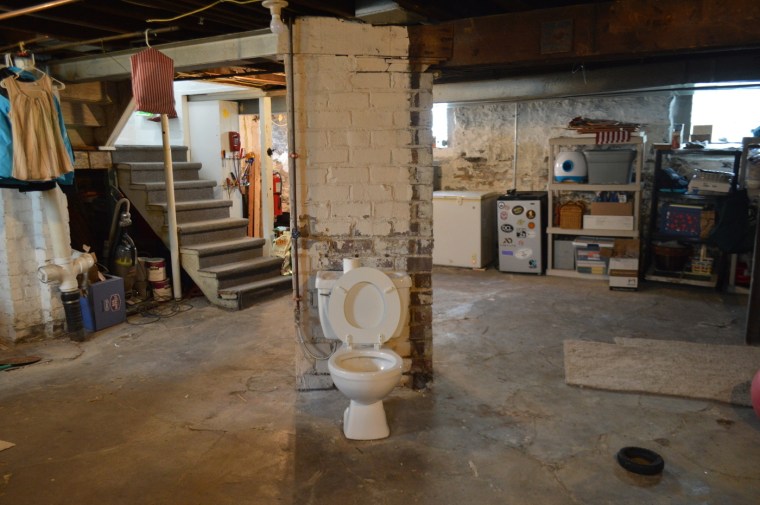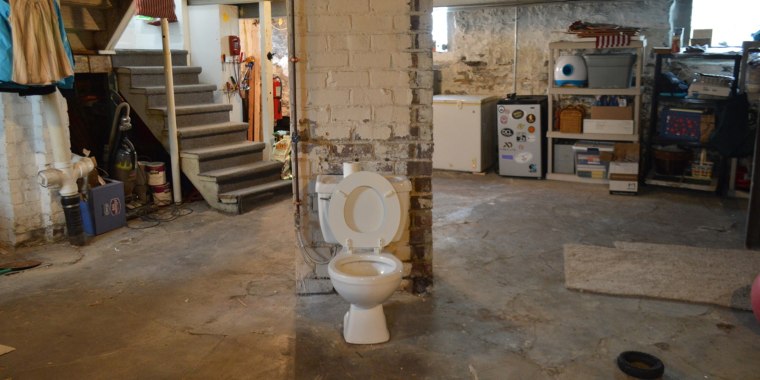Maybe you remember seeing one of these at your grandparents' house as a child — or maybe one even exists in your own home, curiously sitting in the basement.
We're talking about the so-called Pittsburgh potty, a mysterious amenity found in the basements of some older houses. There are no walls for privacy, no sinks for hand-washing — just a toilet, out in the open.
"That's why they've become such a mysterious thing," architect William J. Martin (AIA), who lives in New Jersey but attended Pittsburgh's Carnegie Mellon University, told TODAY Home.
Sure enough, they're something of a historical legend in western Pennsylvania. (One local man is even collecting photographs of the odd toilets, and hopes to compile them into a book, according to 90.5 WESA, Pittsburgh's NPR news station.)
To explain their purpose, many people point to Pittsburgh's history in the steel industry.
"Since we were a steel town, they were in the open part of the basement so steel workers could come home from work, clean themselves off, change clothes and use the Pittsburgh potty before going upstairs to have dinner with the family," Roger Dolanch, owner of Century 21 Frontier Realty in Pittsburgh, told TODAY in an email.

Another real estate agent echoed Dolanch's explanation: "Instead of tracking dust and dirt throughout the house after work, they would enter their house through a separate entrance right into the basement," Jackie Konopka, who works for Triplemint in New York City but had heard of Pittsburgh potties, told TODAY. "Basically, they're like historical mudrooms."
But while the Pittsburgh potties certainly may have been used that way, that's not the real reason they were installed. As Martin originally told 90.5 WESA, the toilets, usually found in pre-World War II houses, were actually there to prevent sewage backups in the nice part of the home. If there was a sewage backup on your street, it would come into your home through the fixture that's lowest to the ground, he explained.
"As cities developed, there were (sewer) problems ... they would have backups," Martin, who is also involved with various historical societies and boards, told TODAY. "When a sewer backs up, it backs up into buildings. So the idea was to put a fixture in the basement where the line came into the street, so if there was a sewer backup, it would go there instead of the main house."
Basically, cleaning up a concrete floor in an empty basement is easier than cleaning up a nice bathroom!
That's also why refinishing one's basement wasn't a thing back then. That's a relatively new concept, since plumbing technology has gotten more advanced in the past 50 years or so.
Despite their name, Pittsburgh potties aren't only found in Pennsylvania. We've heard of them in New York, New Jersey, Oklahoma, Illinois and beyond.
"I think it may just be that the mythology in Pittsburgh is so strong that it made its way into the lexicon," Martin said.
So if you have a toilet in your basement, consider it a fun piece of history. And the next time someone asks about it, you'll have an interesting story to share.
This article was originally published on Oct. 26, 2017.
